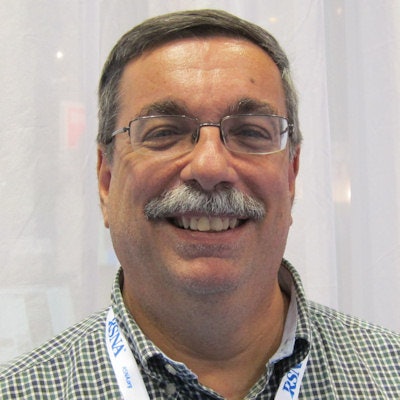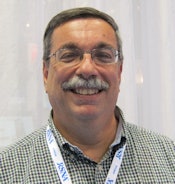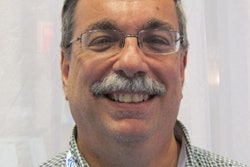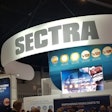
It's time to change how PACS is shown at the annual RSNA meeting in Chicago. Both vendors and prospective purchasers alike would benefit greatly if the RSNA and other relevant organizations could join forces to create an exhibit hall dedicated just to PACS and related imaging informatics technologies.
With recent initiatives such as its virtual meeting and this year's area for first-time exhibitors in a prime location in the North Building, the RSNA has shown it can be a progressive organization. However, PACS is still treated as just another imaging modality, even though it's far from one.
 PACS consultant Michael J. Cannavo.
PACS consultant Michael J. Cannavo.The term PACS has come to encompass not just "traditional" PACS (image and database servers, display workstations, archives, and networks) but also radiology information systems, vendor-neutral archives (including cloud-based and hybrid solutions), medical image sharing, digital dictation and voice recognition, teleradiology service providers, data migration service providers, disaster recovery solutions, and so much more. More than 40% of all companies last year showed either a PACS or PACS-related solution, a percentage that will no doubt be even higher this year. This means that nearly 300 vendors will be showcasing PACS or something PACS-related.
Now let's carry the thought a bit further. Since there are so many PACS products scattered throughout the exhibit floor in several different areas, why not have a specific area where attendees can come and see all things PACS? This will eliminate attendees having to do the Teaberry shuffle, traveling all over creation at RSNA meetings and wasting valuable time.
The North Hall could be PACS and IT-related products, for example, and the South Hall could focus on modality-related and other products (books, etc.). This makes sense on so many levels. In fact, the only real negative I can see is the modality vendors having to create a separate, smaller booth for their PACS offerings and the costs associated therein. This is a small price to pay to funnel traffic to the right place.
Let's further examine the logic of a PACS-centric RSNA area. Most modality vendors have sales executives who sell nothing but PACS. Of course there are also entire companies whose only products are PACS or PACS-related, so booth staffing isn't really an issue for them.
Time management is a huge consideration. It is a fairly well-accepted fact that people are spending less time at RSNA than in years past, as much as 50% by some estimates. Attendees may have several appointments in a defined period of time, yet spend much of that time ping-ponging back and forth between halls trying to figure out where they need to go -- more time than they spend reviewing the system. With everything in a concentrated area, attendees at a PACS-centric RSNA could see more vendors and make better assessments. This optimizes their time and also that of the vendors they are evaluating.
When a facility brings a team of people to look at PACS, it often includes the chief information officer (CIO) and/or chief technology officer (CTO), various individuals from IT, radiologists, the administrative director of radiology, a PACS administrator, and/or others. What happens more often than not during visits to major vendors, however, is that one of those individuals from the radiology side of the house ends up being pulled away by a sales rep to look at a modality or software upgrade or something else unrelated to PACS. This leaves the entire PACS team twiddling their thumbs until the individual is done. With a PACS-centric exhibit area, this wouldn't happen.
Beyond RSNA
Now let's go beyond the RSNA. There are three other organizations where PACS plays a key role: Integrating the Healthcare Enterprise (IHE), the Society for Imaging Informatics in Medicine (SIIM), and the Healthcare Information and Management Systems Society (HIMSS). Jointly launched back in 1998 by RSNA and HIMSS, IHE is an initiative by healthcare professionals and industry to improve the way computer systems in healthcare share information. It promotes the coordinated use of established standards such as DICOM and HL7 to address specific clinical needs in support of optimal patient care. Systems developed in accordance with IHE communicate with one another better, are easier to implement, and enable care providers to use information more effectively, according to the initiative.
A not-for-profit organization founded in 1961, HIMSS is dedicated to improving healthcare quality, safety, cost-effectiveness, and access through the best use of information technology and management systems. HIMSS North America is the single largest healthcare IT organization in existence, representing 64,000 individual members, 640 corporate members, and more than 450 nonprofit organizations.
SIIM considers itself a leading healthcare professional organization representing those who work in imaging technologies and information management. It seeks to spearhead research, education, and discovery of innovative solutions to advance imaging informatics, enable the best use of images throughout the healthcare enterprise, and improve the delivery and quality of patient care, according to the organization.
SIIM's origins date back to 1980 with a group of academic and private hospitals who could see that medical imaging was on the verge of a revolutionary change. They started as the Radiology Information System Consortium (RISC), and expanded in 1989 to become the Society for Computer Applications in Radiology (SCAR) to allow for the inclusion of individual corporate members. The name changed again in 2006 to the Society for Imaging Informatics in Medicine to better reflect the broadened role of imaging across the medical enterprise.
This idea for a PACS-centric exhibit area at the RSNA meeting would seem to be a great opportunity for even more collaboration between these organizations. After all, they have shown they can work together already and can put politics and self-serving needs aside for the benefit of the marketplace. For example, HIMSS and RSNA jointly launched IHE 18 years ago. Now nearly every vendor is on board with IHE and its direction, especially as it relates to interoperability.
In recent years, SIIM has given several educational presentations and courses at the RSNA meeting in conjunction with RSNA, as well as an imaging informatics year-in-review session. What's more, SIIM and HIMSS have collaborated recently on an enterprise imaging workgroup aimed at sharing enterprise imaging strategies and creating awareness that images are an essential part of the electronic health record (EHR).
The HIMSS annual meeting continues to bring in RSNA-sized crowds, with over 41, 000 attendees last year alone. It also continues to pull in more and more PACS-related companies and components, with nearly every vendor-neutral archive (VNA) provider present as well as a host of companies that are important to IT managers. Despite fairly stagnant attendance levels over the past few years, the RSNA meeting continues to bring in over 600 vendors -- nearly 300 of whom are PACS or PACS-related. That in itself makes a powerful statement.
Combining strengths
What if these organizations could team up to organize an area of the conference devoted solely to PACS and related imaging informatics technologies? Making this idea work would require that it be seen as a single positive entity for the imaging community, not fragmented or competitive among the different organizations.
If PACS had its own section at RSNA, each of these entities would be much easier to find and would be able to promote both individual and joint agendas. Equally important, they could get input beyond those of us who have been in the marketplace for decades. Call it "fresh blood," if you will. They might also be able to add to each organization's membership rosters and expand participation at each other's meetings too.
There are many synergies and actually quite few disparities between the organizations. VNAs that are shown at HIMSS, for example, are being demonstrated as being able to handle not just radiology images but cardiology, pathology, electronic medical records (EMRs), and many other clinical systems. Still, radiology by and large remains the primary catalyst for the purchase of a VNA, at least today. The same can be said for digital dictation and speech-recognition systems and so many other applications; radiology remains the purchasing catalyst with many others following suit.
What's in it for each organization? RSNA actually stands to gain the most. As anyone who has been involved in PACS for years understands, the impact of PACS is reaching well beyond just radiology. Not only does RSNA understand the necessity for image access that transcends the radiology department, it also understands that the technology is available to do so.
PACS and the EHR
At most facilities, the CTO, CIO, and IT managers are all looking closely at how PACS can seamlessly become part of the EHR. Sadly, radiology's integration with the EHR has not been a focus at most trade shows; it's often talked about but rarely demonstrated. EHR vendor demonstrations of interoperability with various third-party PACS -- beyond those at a single showcase like what the IHE and RSNA demonstrate annually -- would show the full capability of PACS to everyone in the hospital setting. It would also allow RSNA to go further into the realm of clinical information systems such as EMRs and EHRs.
From an IT perspective, having EMR vendors present their products at the RSNA meeting -- even in a limited capacity -- would make attending the meeting even more valuable. Not only can attendees see the PACS and clinical information systems they are coming to the show for, but they can also better understand how each of these systems works together with others. EMR/EHR vendors would also now be able to show interoperability, not just talk about it. They can also demonstrate interoperability to IT folks considering their EMR/EHR solutions and use this as a closing tool.
This will also expand RSNA's reach outside of radiology and possibly even increase attendance among IT staff and those of the C-suites. HIMSS could benefit by getting more radiology-centric companies to also exhibit at the HIMSS show, while SIIM could continue to further its focus on research, education, and patient care.
The proposal to change how RSNA arranges vendors doesn't require much time or effort and allows vendors a better way to identify themselves in the marketplace as well. It is no different than what RSNA is doing with first-time vendors and is probably much more logical. It would be welcomed by vendors who recognize that PACS isn't a modality but a clinical information system. It would be very welcomed by many of the independents who struggle to be both found and recognized each year. Last but not least, such a change would be appreciated by attendees who could no longer have to feel like a ping-pong ball bouncing back and forth between halls.
Change can be good, and it's time that we consider changing how PACS is shown at the RSNA conference.
Michael J. Cannavo is known industry-wide as the PACSman. After several decades as an independent PACS consultant, he spent two years working as a strategic accounts manager with a major PACS vendor. He has now made it back safely from the dark side and is sharing his observations in this Straight Talk From the PACSman series.
His healthcare consulting services for end users include PACS optimization services, system upgrade and proposal reviews, service contract reviews, and other areas. The PACSman is also working with imaging and IT vendors developing both global and trade show-specific marketing programs using market-focused messaging. He can be reached at [email protected] or by phone at 407-359-0191.
The comments and observations expressed herein are those of the author and do not necessarily reflect the opinions of AuntMinnie.com.



















